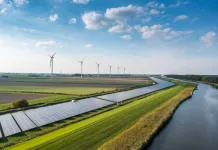The quandary of repurposing lands affected by the historical burden of nuclear bomb testing is no small conundrum. These are spaces profoundly scarred, rendering them inhospitable for residential or educational development. However, a beam of hope shines through with the prospect of harnessing solar energy. Pivoting to a sustainable future, the US Department of Energy and the National Nuclear Security Administration are spearheading an initiative to invite commercial solar developers to transform these sites of the past into powerhouses of the future.
The Call for Proposals: A Renewable Future
It seemed ambitious when six distinct proposals were submitted after the initial call for information in December 2023. By January 12, these forward-thinking companies had shared their vision, propelling the government to take the next step by releasing a Request for Qualifications. This endeavor, located primarily on the Nevada National Security Site—the canvas of tests from the 1950s to the 1990s—is not set in stone, but the wheels of progress are indubitably in motion.
Public Input and Anticipation
Public forums and information days have played a critical role in gathering local and industry perspectives, with a firm commitment from the NNSA to incorporate this feedback into the final request planned for a March 2024 release. This collaborative process underscores the growing consciousness and dedication toward responsible and participatory environmental restoration.
From Legacy Pollution to Clean Electricity
The DOE isn’t new to venturing into renewable projects on complicated lands. Previous initiations at the Hanford and Savannah River sites, as well as the Idaho National Laboratory, reveal a consistent strategy in turning environmental liabilities into clean energy assets. An active transformation is underway, as these projects offer a means to harness otherwise dormant and potentially hazardous landscapes for the greater good.
NNSA’s Commitment to Climate Action
Under Secretary for Nuclear Security and NNSA Administrator Jill Hruby has conveyed the dual benefits of such projects. By generating clean energy and stimulative job growth, particularly in Nevada, these sites can be converted into centers of innovation. The commitment to combating climate change is embodied in these initiatives that extend beyond the scope of mere research and development, with the generation of clean energy at its core.
Cleaning Up with Clean Energy
The DOE is fervent in its mission to repurpose contaminated lands effectively. Solar and wind farms emerge as prominent solutions for these areas, marrying environmental stewardship with economic practicality. With relatively little human intervention required post-installation, these renewable energy plants epitomize the alignment of ecological prudence with technological advancement. More information about this transition from remediation to renewable generation is available in DOE documentation, highlighting a new chapter in energy production on rehabilitated government lands.

























